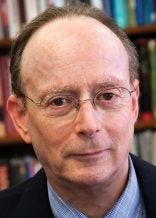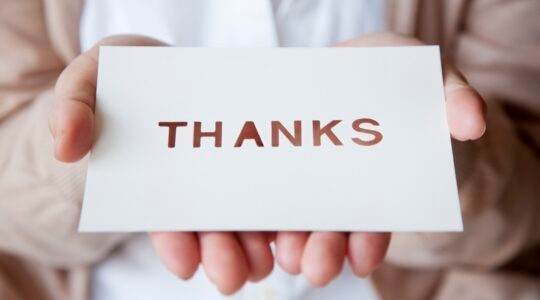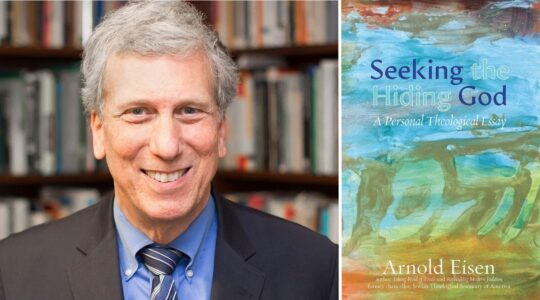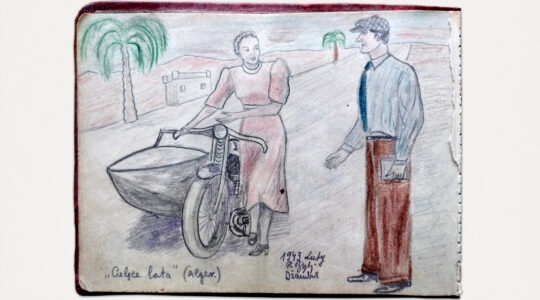Charged by Israeli Prime Minister Benjamin Netanyahu to come up with a Solomonic solution to the growing controversy over women’s prayer at Judaism’s holiest site, Natan Sharansky, the chair of the Jewish Agency for Israel, is prepared to recommend a bold plan to allow any and all Jews to pray at Jerusalem’s Western Wall.
After extensive private consultations and meetings here this week with high-level communal and religious leaders from the major streams, Sharansky told The Jewish Week in an exclusive interview that the talks “gave me great encouragement to go forward.”
Upon his return to Israel, Sharansky will present his formal recommendation to Netanyahu; the proposal would then require approval and government funding. The plan likely will face opposition from some Orthodox groups who until now have had exclusive authority over prayer at the Wall, but Sharansky expressed hope it will prevail.
He has conducted dozens of private meetings here and in Israel since being appointed by Netanyahu last December to be, in effect, a one-man commission. His task: to resolve the thorny issue of prayer at the Wall, balancing human and religious rights in a political context.
The key to his plan, he explained, is “too see all of the Western Wall as one.” The proposal calls for renovating the southwest portion of the Wall, which had been the site of archaeological excavations since soon after the 1967 Six-Day War, and elevate it to equal prominence to the existing area where prayers are now held. (Sharansky pointed out that while the area was set aside for excavation there has been no activity at the site of late.)
That area, known as Robinson’s Arch, has been used for egalitarian prayer in recent years but is quite small. Its holiness as part of the Western Wall is not disputed, but currently access for prayer there is only available on a limited basis and subject to an entrance fee.
The renovation would, in effect, double the area of the Wall dedicated to prayer; one half, now the site of religious services, would remain as is, and continue to be used for traditional prayer. The other half, continuing south (or, facing the Wall, to the right), would be the same length and set aside for egalitarian prayer.
“One Western Wall for one Jewish people” with equal access to all, asserted Sharansky.
Leading up to his New York visit there had been concern that Reform leaders here, sensitive to the concerns of Anat Hoffman, director of Reform’s Israel Religious Action Center and head of Women of the Wall, the group that has sought full equality for praying at the Wall each month on Rosh Chodesh, might balk at not gaining the right to pray in the traditional prayer area of the Kotel.
But Rabbi Rick Jacobs, president of the Union for Reform Judaism, told The Jewish Week after meeting with Sharansky that while the plans “are not all we had hoped for, they represent a dramatic step towards a State of Israel that respects and protects the rights of non-Orthodox Jews.”
He noted that many details need to be worked out, “but in general I am hopeful that we are moving towards a solution that would affirm the unity of the Jewish people and the many authentic ways to practice Judaism.”
Support the New York Jewish Week
Our nonprofit newsroom depends on readers like you. Make a donation now to support independent Jewish journalism in New York.
Rabbi Steven Wernick, CEO of the United Synagogue of Conservative Judaism, said after meeting with Sharansky that “the proposed concept is significant, and there was good will about continuing to talk about refining it.” He said he and his colleagues look forward to working with Sharansky “to find a solution that is good for the entire Jewish people.”
Modern Orthodox officials are said to have offered tacit approval.
The fact that Netanyahu himself acted on this issue and appointed Sharansky, a widely respected hero for his years as an imprisoned Soviet Jewish refusenik, as his point man, indicates the importance given to the views of American Jews, most of whom are religiously liberal. There has been concern in Israel that increasing numbers of American Jews are feeling distant from the Jewish state, not only in terms of its inability to resolve the Palestinian conflict, but seeing themselves as second-class Jews, beholden to Orthodox control of marriage, divorce, conversion and prayer at the Wall.
Sharansky emphasized that his plan “could seriously reduce tensions” and highlight “the Kotel’s unique role of unity rather than disrupting and dividing” the Jewish people. He noted that the proposal calls for 24-hour-a-day access to the Wall, a common entrance between the two prayer areas and would mark “the first time, and in the most visible place, there would be a choice between traditional and egalitarian prayer.”
While he expressed confidence that the proposal will be accepted and become policy, prompting an expensive and extensive renovation of the southwestern area of the Wall — estimated to take up to two years and cost a minimum of $25 million — he acknowledged that there may be stumbling blocks ahead.
They include the antiquities authority, which oversees the archaeological aspects of the area, and the chief rabbi of the Wall, Shmuel Rabinovitz, as well as a wide range of haredi religious and political leaders, who have insisted on the status quo and oppose giving legitimacy to non-Orthodox practices at the Wall. And there is the critical question of what happens in the interim, during construction.
Will the monthly Women of the Wall Rosh Chodesh services continue to be a source of contention, and will its members be arrested during the extended construction period at the site, which has been a flashpoint for religious-oriented protest for many years?
Sharansky is hopeful that once his recommendations are accepted, an interim agreement can be worked out among the various players based on good will and the understanding that a permanent solution is in the works. But the longer the process takes, the greater the chance for disruption.
It is difficult to assess the impact of the recent Israeli election on this issue. On the one hand, the absence of haredi parties in the Israeli government increases the chances for approval of the Sharansky plan. On the other hand, haredi leaders have freer reign to express their disapproval, and could stage large protests, perhaps hoping the new government will fall and they can come back to a share of power.
Dov Lipman, an American-born Orthodox rabbi and new member of Knesset from Yair Lapid’s Yesh Atid party, was in New York this week. When told of the Sharansky proposal, he said he favored the concept of providing a place at the Kotel for everyone who wanted to pray there.
“I can pray where I want to pray and others can do the same,” he said, but noted that “extremists” in the Israeli Orthodox community “will fight this.”
Support the New York Jewish Week
Our nonprofit newsroom depends on readers like you. Make a donation now to support independent Jewish journalism in New York.
The New York Jewish Week brings you the stories behind the headlines, keeping you connected to Jewish life in New York. Help sustain the reporting you trust by donating today.





